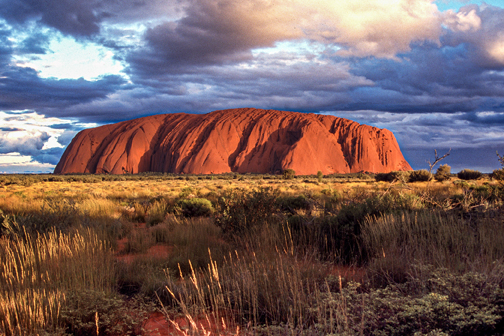
Herding camels is a responsible task

Day: 09
Clackline-Camp – 20.05.2000
At four o’clock in the afternoon we lead the camels into the bush so that they can eat again. Tanja now has the opportunity to teach me what she has learned from Jo. We make sure that none of the camels move away from the group and I learn that it is not easy to keep such large animals under control, even in this situation. Hardie, in particular, always goes off on his own and leaves his comrades. If we want Istan, Jafar and Hardie to follow us, we take the lead camels Sebastian and Goola. This usually works, but not always.
Not far away, a boy rides up and down on his off-road motorcycle. The constant engine noise seems to make the camels nervous. Suddenly they break through the dense undergrowth like an avalanche. Tanja and I dodge them to avoid being run over. We sprint after them and then circle them from the front. Thank goodness they calm down again. We talk to them reassuringly and lead them further into the forest, away from the terrible rattling. Each of the camels has the approximately 7 meter long connecting rope around its neck. It is knotted to the upper part of the neck and is passed through a round ring on the halter. The camels always carry this rope behind them. This gives us the chance to catch them trying to escape. By the way, they also hopped on their front feet. If they were without Hoppel they would simply gallop away, which would mean our death later in the outback. Without camels we would be at a loss because they carry everything we need to survive. Despite the hobbles and the shepherd’s rope, we have to keep a constant eye on them. Camels can also reach considerable speeds when hobbling and are also good at hiding. This means that if they are only a few meters away, it is sometimes difficult to recognize them. Their behavior and coat color give them perfect, natural camouflage. Besides, they leave no trace on the forest floor and we would never find them again. So it is a very responsible job to be a camel guardian and every little inattention is immediately punished. “When will they be full?” I ask Tanja. “Jo explained to me that you can tell when they start to nibble listlessly at the bushes or ignore good food. As a rule, Jo says that a good hour in the morning and evening in the green bush is absolutely sufficient,” answers Tanja. I am happy about what she has learned in the last few days. As dusk begins to fall, we attach each individual animal to a separate tree. It is important to tie them as far away from each other as possible so that they cannot reach each other. Their rutting season begins right now in winter. Even if our animals are neutered, they become more aggressive than normal and it can happen that they bite each other. Tanja warns me that I should never have a finger in the knot when tying it. It can easily happen that you push your finger through an eyelet and at the same time the camel takes a step forward. In this case, the finger is off. According to Jo, many a camel man has lost a finger due to a moment of inattention. Finally, I tie Sebastian to a tree. My eyes fall on his knee in horror. A flap of cornea about 5 marks (50 Australian cents) in size is hanging from a scrap of skin. On closer examination, I notice that the wound is relatively deep. The raw meat can be seen at this point. Tanja and I disinfect the wound that same evening and I apply a bandage to protect it from further dirt.

